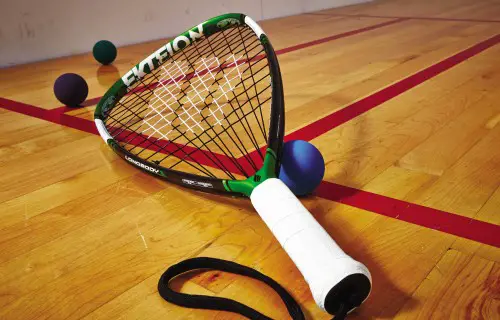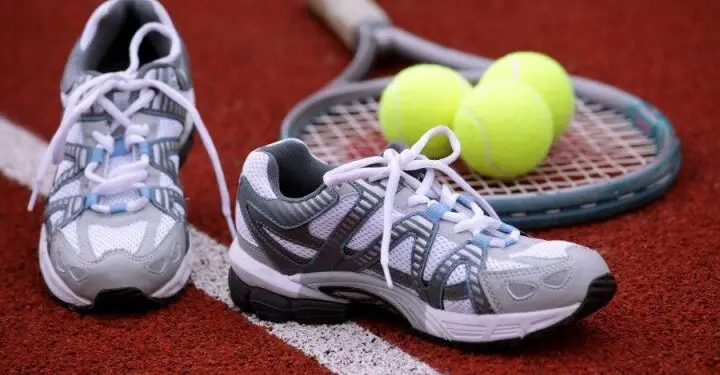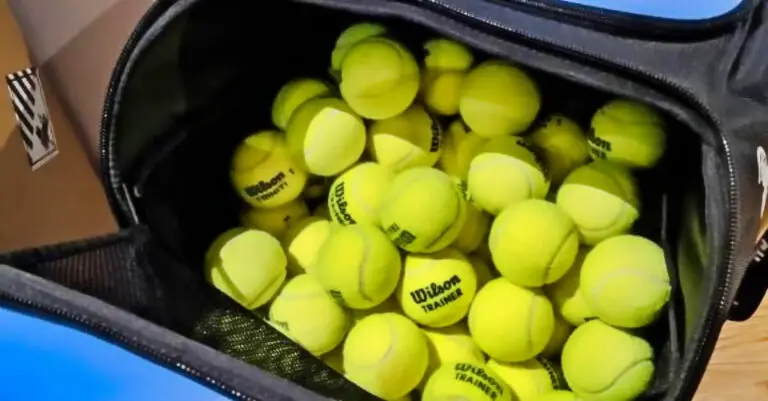Why Do Tennis Players Wear Wristbands?
The game can go on for hours, so there will be lots of sweating. To be effective, you must be capable of cooling down your body. You also desire mastery of your racquet. By wearing a wristband, you can avoid losing your grip due to sweat, which could cost you a point or, worse yet, the entire game.
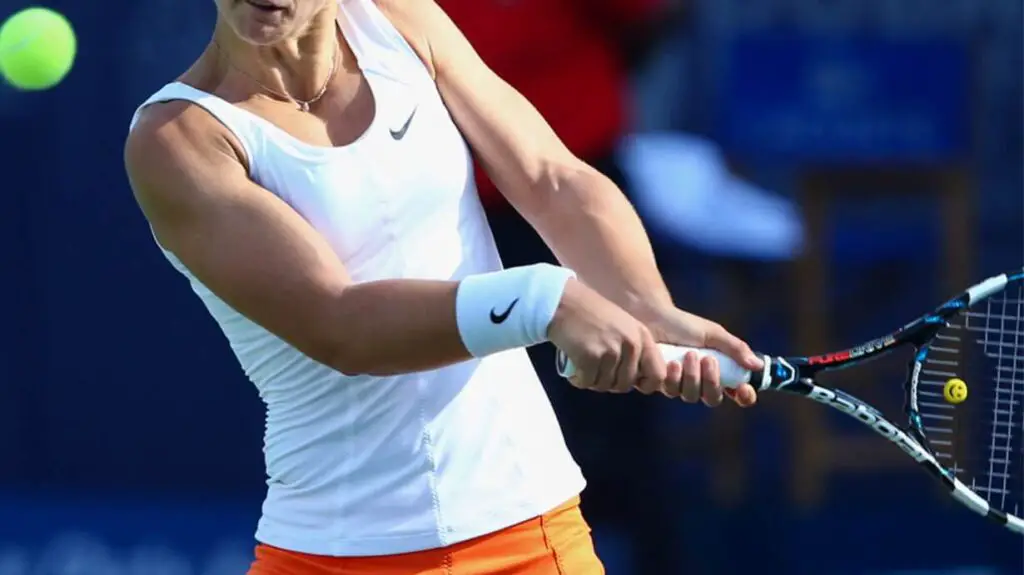
Tennis players use wristbands for various purposes, but their main goal is to improve their performance and keep their attention on the court.
Although there may be differences in personal preferences, the following are typical justifications for wristband use in tennis:
Sweat absorption:

Tennis is a physically demanding activity that frequently results in excessive sweating. SWristbands are designed to absorb sweat from the players’ foreheads and arms, preventing it from dripping onto their hands, racket grip, or eyes.
Players may maintain a tight grip on the racket and avoid any potential slippage that could damage their shots by keeping their hands dry.
Improved grip:
The grip of the tennis racket can be substantially impacted by moisture on the hands, which can compromise control and accuracy.
Wearing wristbands helps maintain a constant grip throughout the game by preventing sweat from seeping into the players’ palms. This improves their capacity to perform accurate shots and handle the racket steadily, particularly during challenging rallies.
Reducing distractions:
Tennis players use wristbands to cut down on distractions from sweat. They can preserve clear eyesight and prevent any discomfort or irritability from sweat dripping into their eyes by keeping sweat away from their faces, especially the eyes.
Players’ concentration and general performance are improved when they can see clearly and remain focused on the game.
Injury prevention:

Tennis wristbands should also be worn for injury-avoidance purposes. Tennis demands repeated arm motions, which can stress the tendons and muscles of the wrist and forearm.
The likelihood of typical tennis injuries such as wrist sprains or strains is reduced due to wristbands’ compression and support in these areas.
Wristbands’ compressive properties can also help to reduce joint edema and stabilize the wrist during vigorous movements.
Style and personal preference:
Although wristbands are primarily used for utility, many tennis players also use them to make a fashion statement or show off their unique flair.
Wristbands are available in various hues, patterns, and styles, allowing players to personalize how they appear on the court. It gives it a unique touch and allows professional athletes to market themselves.
What Materials Are Tennis Wristbands Made Of?

The materials used to make tennis wristbands often offer comfort, moisture absorption, and durability. Tennis wristbands are frequently made of the following materials:
Cotton:
Cotton is a common material for tennis wristbands because of its softness and absorbency. It effectively wicks away sweat and keeps players’ hands and foreheads dry during tight matches. Cotton wristbands are breathable and comfortable to wear, minimizing the development of too much heat.
Terry Cloth:
A looping fabric recognized for its superior moisture-absorbing qualities is terry cloth. It is frequently utilized in wristbands because it can swiftly remove sweat from the skin and keep users comfortable and attentive.
Many tennis players like terry fabric wristbands because they are comfy, lightweight, and strong.
Nylon:
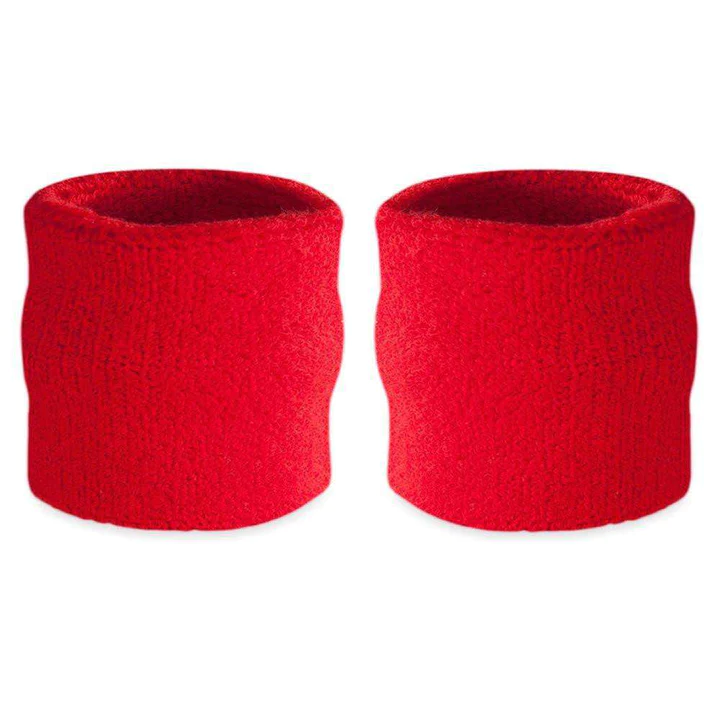
Wristbands made of nylon are flexible and light. They can wick away moisture, allowing perspiration to evaporate quickly and keeping the player’s skin dry. Wristbands made of nylon are long-lasting and resistant to wear and tear due to the material’s resilience.
Polyester:
Wristbands made of polyester are renowned for their robustness and resistance to strain. They have effective moisture-wicking properties, which help keep players’ hands and foreheads dry. A polyester is a good option for tennis wristbands since it dries quickly and holds its shape nicely.
Spandex:
Spandex is a flexible synthetic fiber frequently used in wristbands, usually called lycra or elastane. It increases the wristband’s elasticity, enabling a secure fit and unrestricted motion. With the help of spandex, wristbands maintain their elasticity and form over time, providing players with a snug and comfortable fit.
Note:
It’s important to note that these materials can be combined to make wristbands, as producers frequently aim to produce wristbands that offer the finest combination of comfort, moisture absorption, toughness, and flexibility.
Tennis wristbands come in various brands and types, with varying material compositions to suit player preferences and performance requirements.
FAQs
How do wristbands absorb sweat?
Wristbands are typically made of materials like cotton, terry cloth, or nylon that have good moisture-absorbing properties. These materials wick away sweat from the skin, pulling it into the fabric and allowing it to evaporate quickly.
Can wristbands improve a player’s performance?
Wristbands can indirectly enhance a player’s performance by providing a more comfortable and focused playing experience.
By absorbing sweat and keeping hands dry, wristbands help maintain a firm grip on the racket, prevent slippage, and improve control and accuracy during shots.
Do wristbands prevent wrist injuries?
While wristbands primarily focus on sweat absorption and grip improvement, they can provide some support and compression to the wrist.
This compression may help stabilize the wrist joint and reduce the risk of strains or sprains, though it should not be considered a substitute for proper warm-up and conditioning exercises.
How should I clean my tennis wristbands?
Most wristbands are machine washable. It is recommended to follow the care instructions provided by the manufacturer, which often include washing them in cold water with mild detergent and air-drying them.
Avoid using bleach or fabric softeners, as they may affect the absorbency and durability of the wristbands.
Are there different sizes of wristbands available?
Yes, wristbands are typically available in various sizes to accommodate different wrist circumferences.
They usually have elastic or stretchy components to provide a snug fit. It’s important to choose wristbands that fit comfortably but aren’t too tight, as overly tight wristbands can restrict circulation.
In Conclusion
Tennis players use wristbands to move away sweat, keep a tight grip, minimize distractions, guard against injuries, and express their flair.
The comfort and performance of players during tense matches are significantly improved by these modest accessories, enabling them to concentrate, develop their skills, and perform to the best of their abilities.
Resources
- https://www.quora.com/Why-do-tennis-players-wear-a-wristband
- https://strefatenisa.com.pl/en/lifestyle-blog/why-do-tennis-players-wear-wristbands
Related Posts
Why Are Tennis Balls Sealed? ( The Key Reasons )
How Much Does A Pair Of Tennis Shoes Weigh?

